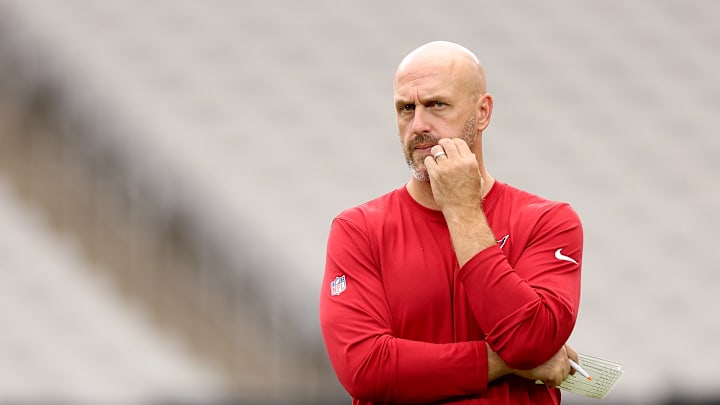The preseason for the Arizona Cardinals officially ended on Saturday with a close 18-17 victory over the Minnesota Vikings. However, with the regular season getting ready to begin, fans now have no choice but to face reality: this is going to be a rough year.
The moves that have been made this offseason all indicate that the present is not part of the calculus for building a winning roster. Notwithstanding, a reconstruction is long-overdue in order to open a new window for contention.
General manager Monti Ossenfort has not been shy about stripping the roster down to its studs and an interesting case study for his vision can be found in the roster construction of the defensive unit. The front office first tipped their hand in desiring to distance themselves from the Steve Keim era by not retaining Byron Murphy or Zach Allen, who both flashed in spots during their time with the team.
With the recent trade of Isaiah Simmons, it further cements that the primary motive of the 2023 season is to reset. The Arizona Cardinals will be fielding the second cheapest defense in the NFL, ahead of only the Los Angeles Rams. With 29.21% of their cap committed this is the lowest amount the Cardinals have allocated since Spotrac started tracking positional spending in 2013.
One of the most tried and true ways to project future performance is to look at the past. Unfortunately, the Cardinals find themselves at a spot where history is working against them.
Since 2013, the teams that were in the bottom two of defensive spending have, on average, allowed the seventh most yards per play according to Pro Football Reference. These same defenses have on average yielded 5.9 yards per play, which would have ranked third worst in the NFL last season. History indicates that the Arizona Cardinals will regress even further on defense this season, but this has always been viewed by the front office as a necessary sacrifice to build for the future.
Defensively, the Arizona Cardinals may be experimenting with “The Process” made famous by the Philadelphia 76ers.
Most recently this strategy has been updated with promising results from the Oklahoma City Thunder. Some may call it "tanking," but I find the most defining part that both these teams adopted was to have as clean a cap sheet as quickly as possible.
Front offices want to be committed to a clear vision of the future, and it is much simpler to implement when not competing with the vision of a past regime. According to Spotrac, the Cardinals have less than 20% of their cap space allocated toward defense in 2024.
This means that the Cardinals have flexibility for the future and many avenues to improve. It could be through free agency, trades, and most importantly the ability to retain talent.
Steve Keim’s tenure as the Arizona Cardinals general manager was dogged by several issues, but what ultimately sunk him was that too many core contributors would leave the organization and he left himself with too few options to replace them. Keim’s best moves as a general manager were through trades and free agency at the cost of cap space flexibility down the line.
The overreliance on external talent resulted in the Cardinals losing their homegrown talent like Calais Campbell and Tyrann Mathieu. “Keim Time” moves for free agents who far outperformed their salary saved his job more than a few times, but it always proved to be too volatile a strategy to remain sustainable. It is no coincidence that in Monti Ossenfort’s first offseason as general manager he avoided overspending in free agency.
In just a little over seven months, Monti Ossenfort has revealed a lot about his long-term vision and how it differs from the front office who was in operation for the last decade. This is a transitional year where both he and Jonathan Gannon can evaluate who fits the future of this team and fill out the holes on the roster sustainably through the draft. Only time will tell if this front office is able to execute on this strategy but is becoming clearer that the Arizona Cardinals see their path to contention through efficient cap allocation.
(Information provided by Spotrac and Pro-Football-Reference)
